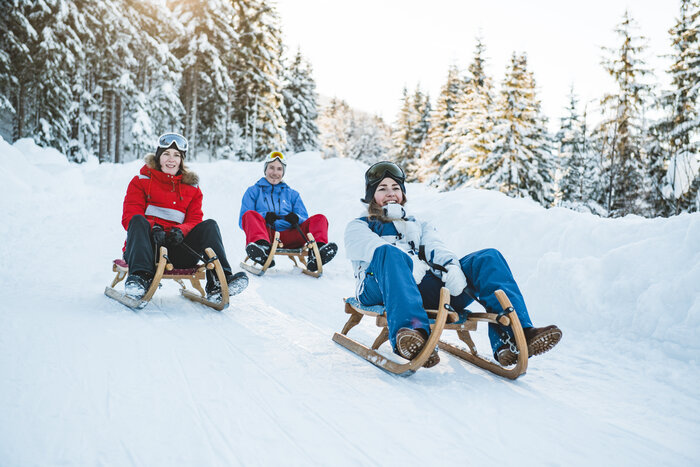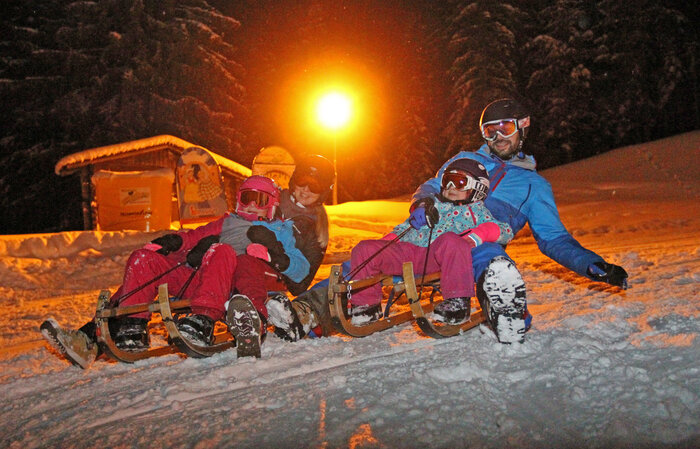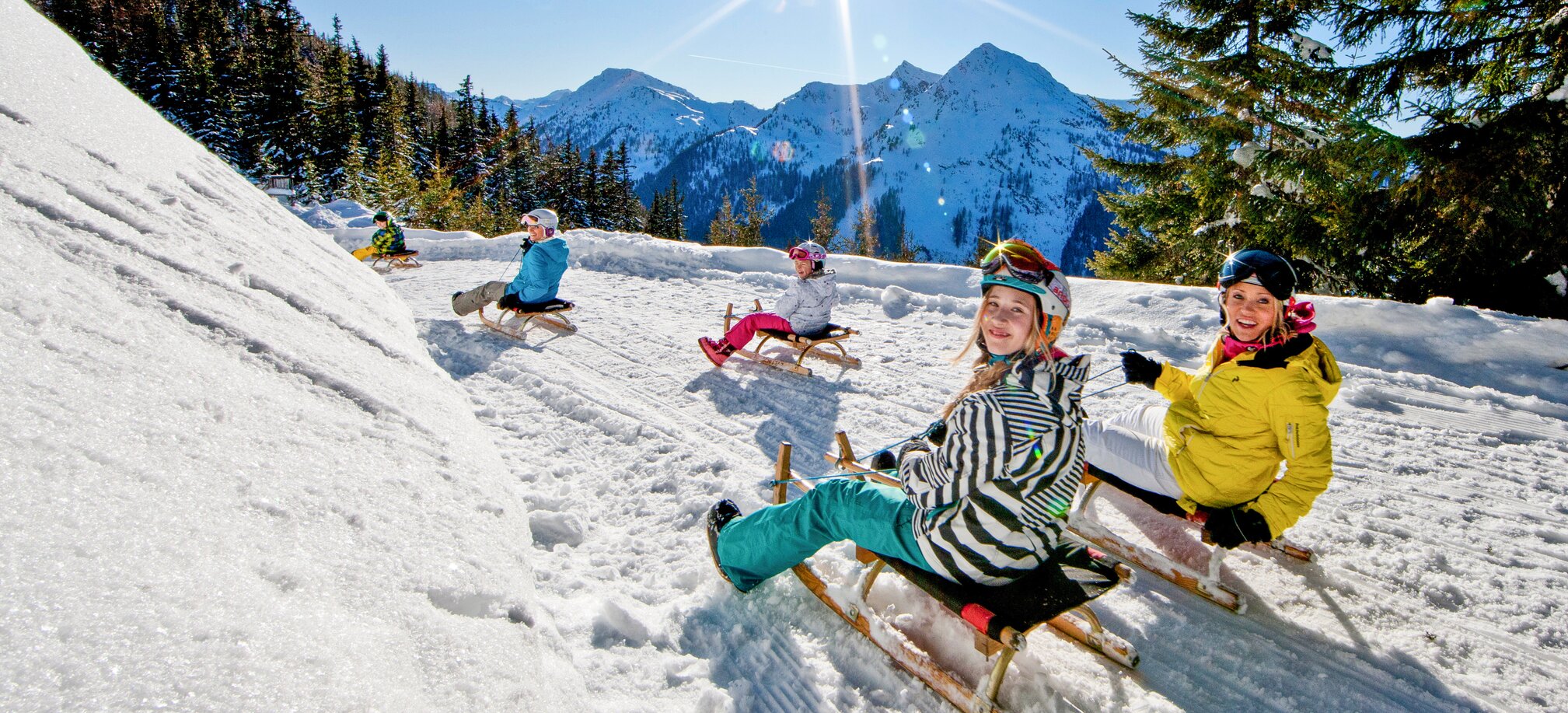
1. The right toboggan
To begin with, you should think about good material: the right toboggan should be stable and equipped with a steering rope, which you can use to pull the toboggan up the mountain if necessary and also steer it well when travelling downhill. A stable yet manoeuvrable toboggan, preferably made of wood and with steel runners, offers maximum control and stability on the descent.
2 The right equipment
In principle, you should be just as well equipped for tobogganing as you are for skiing. A helmet with ski goggles, warm winter sports clothing, thick gloves and sturdy, warm winter boots are essential. Boots are particularly important when tobogganing, as you brake mainly with your feet and a good sole is definitely an advantage for grip and control when steering and braking.
3. The right position
If you are travelling alone, you can sit in the middle of the toboggan and either hold the steering cable in one hand and the other hand at the rear end of the seat or place both hands on the steering cable. Stretch your legs straight forwards and press your feet sideways against the horns, the two curved tips at the front end of the toboggan.
If there are two of you sitting on the toboggan, the stronger person should sit at the front and take over the steering, while the other person sits as quietly as possible behind the rider with their hands clasped around their torso.
4. Correct braking
You can brake the toboggan by pressing the flat sole of the whole boot firmly into the ground. Ideally, however, you should practise braking a few times before you actually start. For example, you can look for a fixed point to which you can try to stop (tree, lamppost, etc.) so that you learn to estimate the braking distance correctly. You can increase the braking force by lifting the front end of the sled - the position of your feet will not change.
5. Making the right turns
Similar to driving a car, you should always brake before the bend when tobogganing, not just in the bend. You should approach the bend from the outside and then turn inwards by shifting your weight inwards and stretching the arm on the inside of the bend out to the side. In addition, the leg on the outside of the bend presses against the side of the skid and the steering cable is always in the hand on the outside of the bend. This will help you safely round every bend.

With the help of these tips, you are sure to get down every toboggan run safely and with lots of fun. Tobogganing is a must on your next skiing holiday in Ski amadé. Have fun with it 😉


